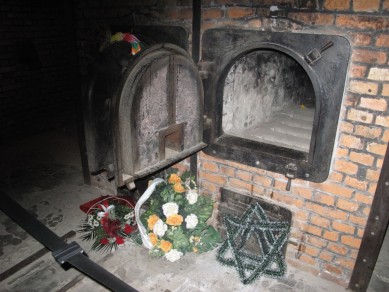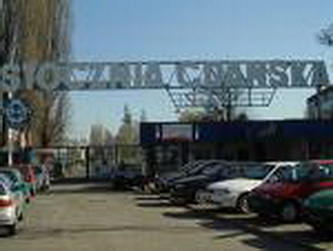In one of my visits to Europe, I along with my friend traveled by car to Eastern European countries. We visited Poland, Czechoslovakia and Hungary among other countries. I was familiar with the names of couple of cities of Poland. I wanted to visit particularly two places. They were Gdansk, a city on the Baltic Sea and Auschwitz, a place in southern part of Poland.. I knew Gdansk because the Solidarity Movement was started in that City by Lech Walesa, a Shipyard Union Leader under the banner of Solidarity Trade Union which removed the Communist regime in Poland in the year 1990. .I wanted to see the shipyard as the freedom movement in Poland was started from there.
Whereas Auschwitz is situated in southern Poland. The name is derived from the German name for the nearby town of Oswiecim.. It gained notoriety for it’s concentration camp during Hitler’s oppressive rule. It was the biggest holocaust the mankind has ever seen. Hitler had established a concentration camp there to exterminate Jews from Europe. A Visit to Auschwitz is very educational, incredible and gave me a touching experience. It helped me to know and think about tolerance, human rights and a need to care for peace.
The Concentration part of the camp in Auschwitz was built in 1940. It was one of the first and the biggest Nazi camps in the territory of occupied Poland. The Camp was divided into three main parts – Auschwitz I – camp of compulsory work and administrative center, Auschwitz II – Birkenau – extermination camp, where people were kept in inhuman conditions and murdered in gas chambers, and Auschwitz III Monowitz, where prisoners were made to work for the biggest German companies and enterprises. It’s very hard to estimate the real number of victims killed in Auschwitz, but our guide said perhaps it was between 1.1 million to even about 4 million people.

The prisoners were brought here in trains in the guise of getting work and resettling down in a new place. Believing in the representation of Nazis, they brought along with them their valuables. At the main entrance to the camp there is a gate on which it is written “Albeit Mach Frei†which I learn means “work makes freedomâ€. The said slogan was written to mislead the prisoners. From hereon, one passes through electrified barbed wire fences, two of them with several feet between where the incoming prisoners to the Auschwitz main camp were registered, bathed, disinfected, tattooed, shaved and then given a blue and gray striped prison uniform to wear. The information poster said that in December 1942, there were 19 such chambers installed in this building, where the prisoner clothing was disinfected in an attempt to stop the typhus epidemic.
We walked through the whole of the camp and entered 4 of the blocks to view the exhibitions on display. They are photographs taken of prisoners or of a free people being herded into the camp to die. One block had piles of possessions taken from the Jewish people who arrived at the camp. Piles of shoes, suitcases, clothes, hair, combs, hairbrushes, shaving brushes, wallets, eyeglasses, photos, books. Photography though not allowed as a respect to the dead, no one would object if one clicks his camera.
While passing through Block No.11, the “Head phone guide†told us that prisoners from Auschwitz I and Auschwitz II (Birkenau) were brought for punishment for what the Nazis considered serious offenses, such as sabotage in the Auschwitz factories or attempting to escape. It was also where political prisoners from outside the camp were housed awaiting trial. There is the Black Wall where prisoners were executed after they were convicted.. . Block 10 next to it had boarded up windows so they could not see the executions by firing squad in the yard next to them. . Block 11 had chambers in the basement where people were starved to death, asphyxiated, or died of exhaustion from being forced to stand in a small cell with others for days on end
As we walk out of the camp, we pass into the area where the gas chamber was and the crematorium. These have been reconstructed but even if they are not the original item and weren’t used, they are, we were told, on the same location and made from the original materials and it was chilling to enter and see. I would like to explain how the Nazis mass murdered the Jews or prisoners in these gas chambers. I am repeating from a book brought out by the Auschwitz State Museum in the year 1990. It is ghastly and with the said quote, I close.
“Trains loaded with European Jews from all the Nazi-occupied countries were directed towards as specially built platform where SS physicians selected people fit to work from the elderly, invalids, pregnant women and children-usually unfit for any type of work.
The SS ( abreviation of Schutzstaffel – it means Protection Squadron ) physicians without carrying out any examinations sentenced an average 70 to80 per cent of the arrivals to death. This group of people was surrounded by SS-men on duty during the selection, who then marched them off to the gas chambers after telling the people they were going to the showers and for disinfection before entering the camp….. Some of the gas chambers in Birkenau could take in 1500 to 2000 persons………
After the air- tight doors of the gas chambers were locked, the SS-men poured in cyclone –B poison through special holes in the ceiling. After fifteen to twenty minutes, the people inside the chambers were dead. Their bodies were burnt in the four crematories or on pyres
It is not known how many must have been murdered in gas chambers. But it is said that the company which manufactured cyclone –B in 1942 and 1943 had supplied 19,652 kg of this poison and it is also said that 6-7 kg of cyclone –B is needed to poison 1500-2000 people. Now one can guess as to the number of people gassed by Nazis apart from other mode of murders such as execution, death due to starvation, diseases etc.
Though camp visit was a sickening experience, I am glad that I saw the camp and could appreciate how cruel the Nazis were. I think it is on the whole an educative experience.


